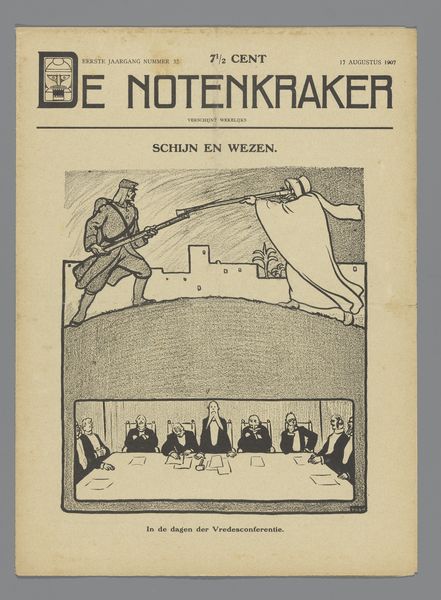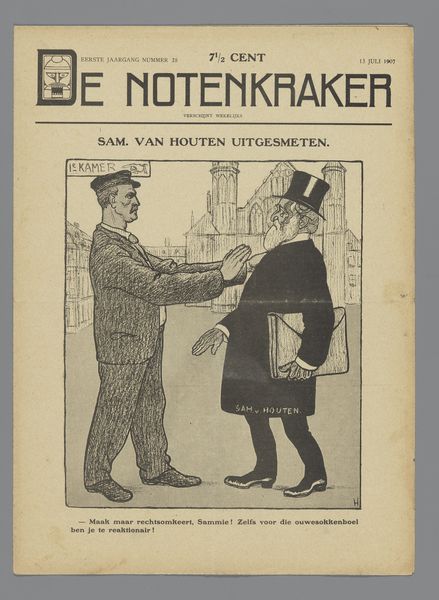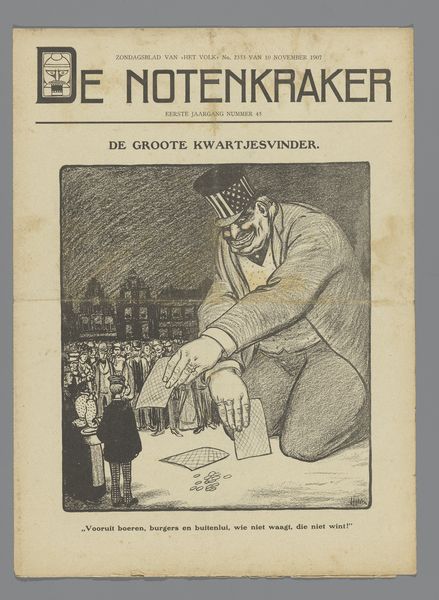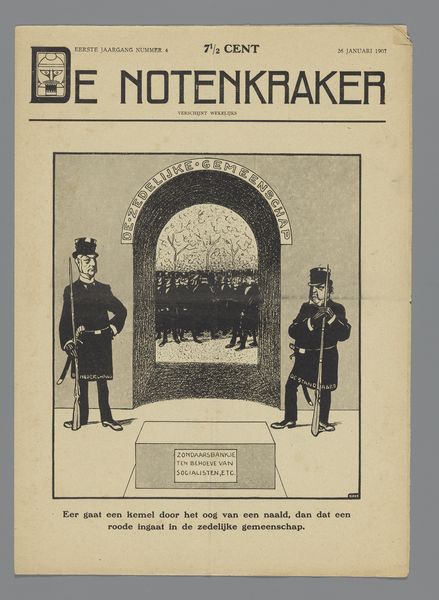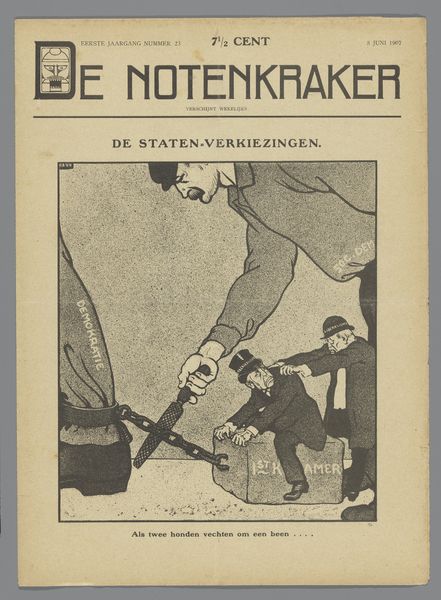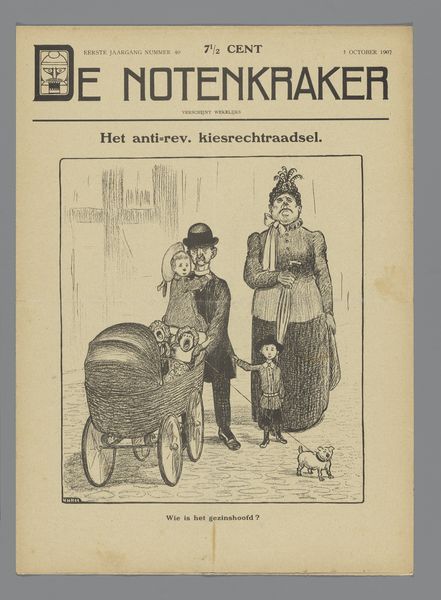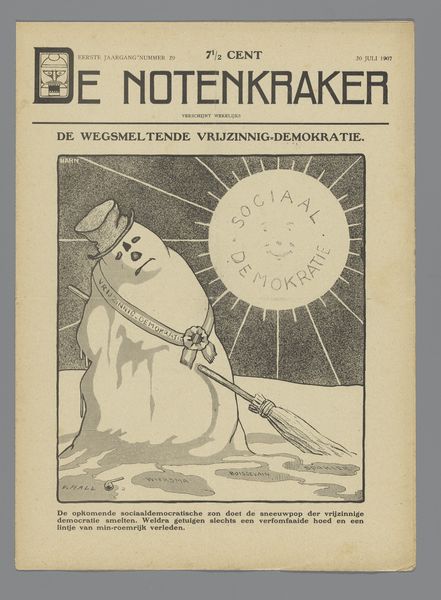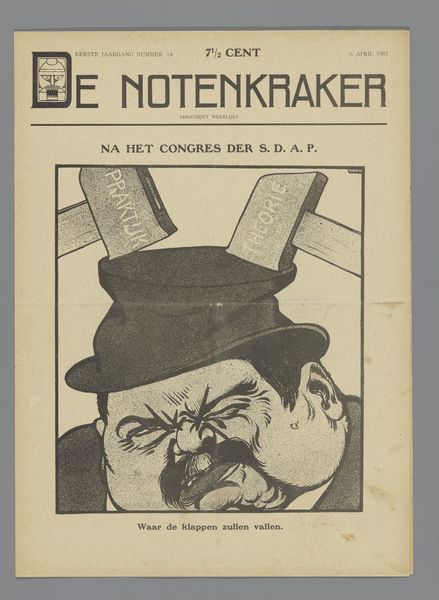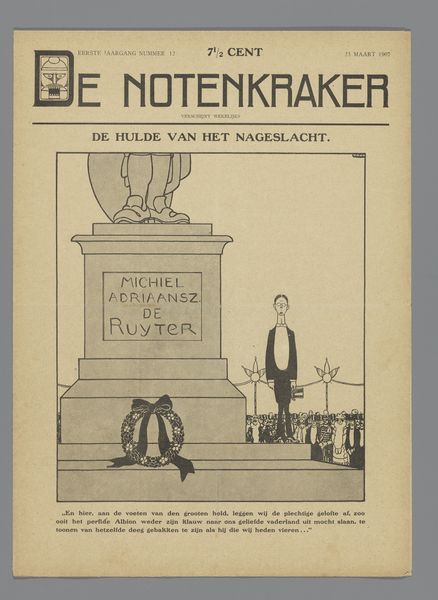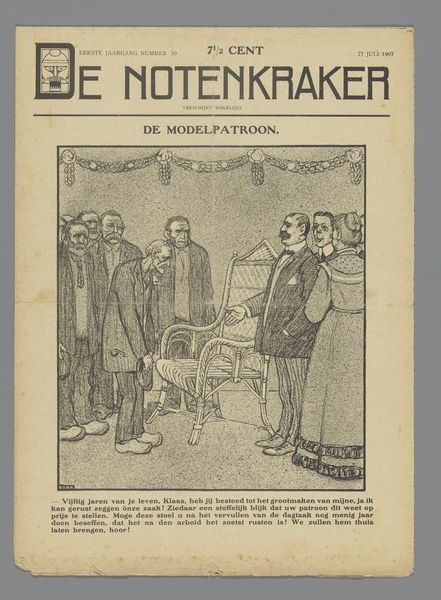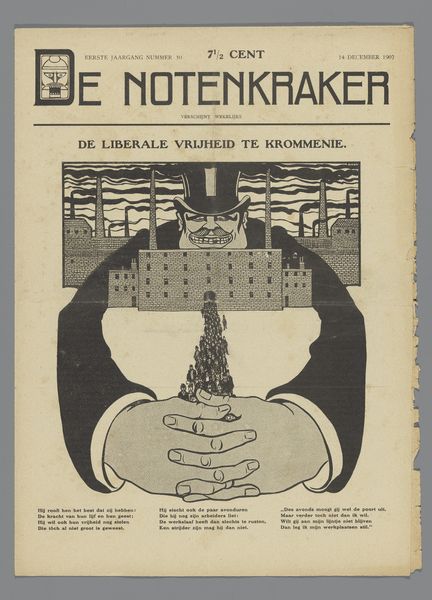
drawing, print, paper
#
drawing
# print
#
caricature
#
paper
#
symbolism
#
early-renaissance
Dimensions: height 348 mm, width 252 mm
Copyright: Rijks Museum: Open Domain
Editor: So this is a print called "De Blinde Justitie," or "Blind Justice," created by Albert Hahn, likely between 1907 and 1917. It’s a stark image – Justice, blindfolded, seated above trains filled with people. What catches your eye in terms of how it might reflect the social conditions of its time? Curator: My focus immediately goes to the method of production. This isn't a precious oil painting meant for a wealthy patron, but a print, likely mass-produced. It implicates a much wider audience, perhaps a working-class one reading "De Notenkraker" for its social commentary. Consider the labor involved in creating and distributing such a piece and also consumption. For whom this critique of justice, presented by a "blind" dispenser of fairness, intended? Editor: That makes sense. I hadn't really thought about how the medium itself is part of the message. What about the imagery then? The trains seem significant. Curator: Absolutely. What do trains signify in the late 19th and early 20th centuries? Editor: Progress, industry… but also potentially the movement of people, perhaps even… the exploitation of labor. Curator: Precisely! Hahn is using easily recognizable symbols of industrial progress – the material underpinnings of society. The ‘blind’ Justice overlooking the movement of the populous presents a troubling contrast, doesn't it? Are these workers seeing equal protection under law? The artist seems to suggest otherwise. Where is Hahn challenging the traditional notion of “high art,” and incorporating this “everyman’s medium?" Editor: So it’s not just about the message within the image, but how the image itself, through its means of production and accessibility, speaks to the very systems it critiques. I guess seeing art this way gets us to be a bit more critical about how justice and art are distributed within society. Curator: Exactly. Understanding art this way can hopefully get more people into the museum by acknowledging the significance in production rather than solely appreciation. It helps us uncover deeper and more complex social truths about the society within.
Comments
No comments
Be the first to comment and join the conversation on the ultimate creative platform.
